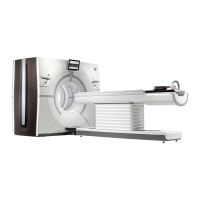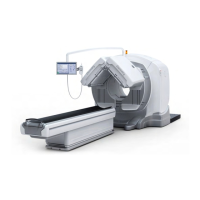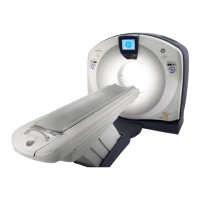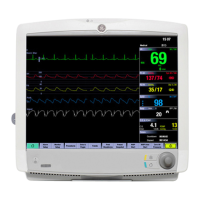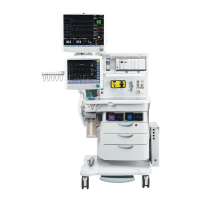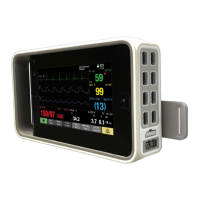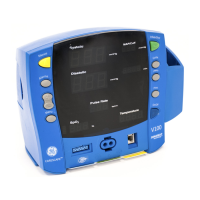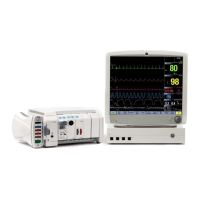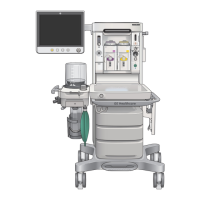GE MEDICAL SYSTEMS CT 9800 QUICK SYSTEM
Rev. 12 ➤ Indicates Change Direction 18000
4-12-17
To measure the MTF we will use an empirical method which uses the standard deviation of an ROI within a set of
bar patterns in the QA phantom. This standard deviation of the bar patterns is proportional to the modulation. The
following relationships shall be used to determine MTF:
(A) M = (SD
b
2
- Sd
n
2
)
«
where M = Modulation
SD
b
= Standard deviation of bar pattern in plexiglass.
SD
n
= Average standard deviation of plexiglass and water (i.e., image noise), e.g.,
SD
n
= (SD
p
+ SD
w
) ÷ 2.
(B) Contrast Scale = CT
p
# - CT
w
#
where CT
p
# = mean CT# for plexiglass.
CT
w
# = mean CT# for water.
(C) MTF = (2.2 X M) ÷ Contrast Scale
ROI measurements are done with a 17 X 17 pixel box inserted into bar pattern F (3.1 lp / cm.) as shown in
Illustration 4-12-5.
NOTE: Be sure that the ROI box does not exceed the boundaries of the bar pattern.
Proceed as follows:
1. Perform a scan at S / 120 kV / 170 mA / 10 mm. / 2 sec. Use the standard algorithm and 512 X 512 matrix.
NOTE: Save raw data.
2. Position a 17 X 17 pixel box at the 3 positions shown in Illustration 4-12-4. Record the following:
• ROI # 1(plexiglass) --- record mean CT number (CT
p
#) and standard deviation (SD
p
).
• ROI # 2(water) --- record mean CT number (CT
w
#) and standard deviation (SD
w
).
• ROI # 3(bar pattern F) --- record standard deviation (SD
b
).
3. Calculate the MTF as follows:
(a) Calculate the modulation, M, using formula (A) above.
(b) Calculate the Contrast Scale using formula (B) above.
(c) Calculate the MTF using the values of “M” (step “a”) and the Contrast Scale (step “b”).
➤ The MTF for the standard algorithm, small cal, 512 X 512 matrix at 3.1 lp / cm. should be at least 0.68 %.

